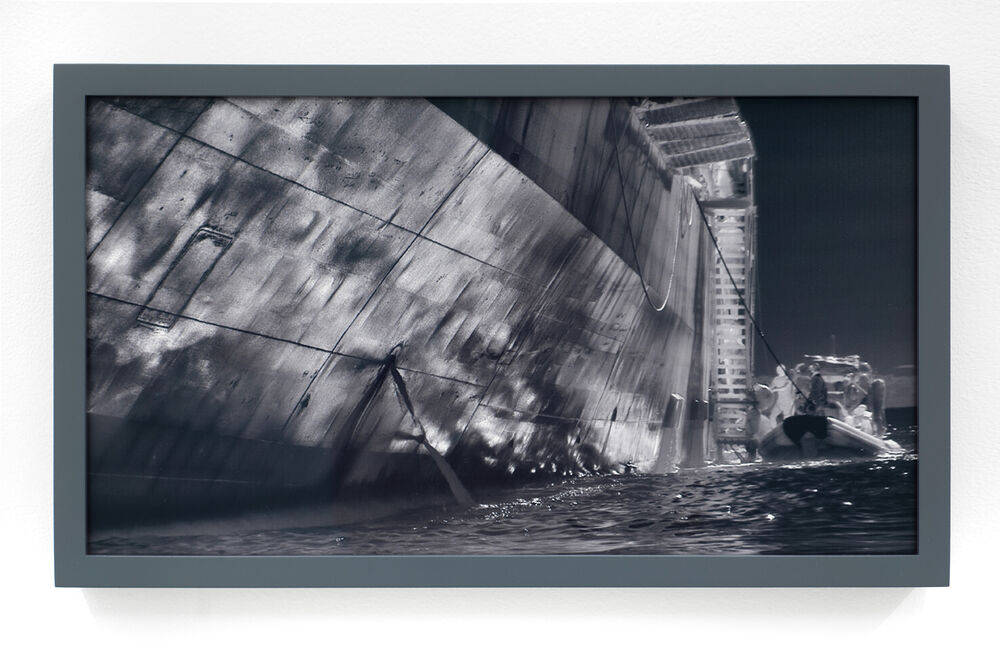
Still from Incoming #38, 2016
Richard Mosse
1980
Digital c-print on metalic paper. 29 x 50 cm. 4/5 + 2AP.
© Richard Mosse
Om fotografen
Richard Mosse (born 1980, Kilkenny, Ireland) is an Irish conceptual documentary photographer. Mosse gained significant attention for his photographs of the war in eastern Democratic Republic of Congo using colour infrared film intended to create a new perspective on conflict. It was also made into a film with cinematographer Trevor Tweeten and composer Ben Frost. This work was published in three publications, exhibited in solo exhibitions, and won the Deutsche Börse Photography Prize in 2014.
In 2017 his video installation Incoming, commissioned by the National Gallery of Victoria and the Barbican Art Gallery, made in collaboration with musician Ben Frost and Trevor Tweeten, won the Prix Pictet. Mosse lives and works in New York and Berlin. He received a first class BA in English literature from King's College London in 2001, an MRes in cultural studies from the London Consortium in 2003, a postgraduate diploma in fine art from Goldsmiths, University of London in 2005 and a photography MFA from Yale School of Art in 2008.
He has worked in Iraq, Iran, Pakistan, Palestine, Haiti and the former Yugoslavia. He is best known for his infrared images from the Democratic Republic of the Congo (DRC). For his infrared photographs he used a large format camera and the now-discontinued Kodak Aerochrome film. Aerochrome is a false-color infrared film originally intended for aerial vegetation surveys and for military reconnaissance, such as to identify camouflaged targets. It registers a spectrum of infrared light invisible to the human eye, rendering the green landscape and soldiers' uniforms in vivid hues of lavender, crimson and hot pink.
Critic Sean O'Hagan, writing in The Guardian, said "His images from there often seem to skirt the real and the fictional, simply though [sic] their heightened and unreal colours. He has made the familiar seem strange and the real seem heightened to the point of absurdity. This is war reportage – but not as we know it." Willy Staley, writing in the New York Times Magazine, said "Mosse highlights the eastern Congo's natural bounty while acknowledging both the medium's origins and, he points out, the West’s tendency to see in the Congo only darkness and insanity."
Richard Mosse